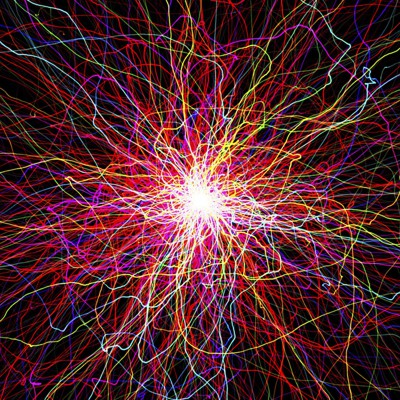Quantum Sensor Breakthrough Paves Way For GPS-Free Navigation
Quantum science—one of the Pentagon’s top research priorities—may be about to deliver on its longtime promise of an alternative to GPS. A team of scientists from Sandia National Laboratory has developed a quantum sensor that doesn’t need the power or massive support machinery of previous prototypes, and which has overcome durability concerns by running for a year and a half in the lab. That could enable a wide range of civil and military applications, including drones that don’t need weak and spoofable satellite signals to navigate in the air, underwater, and even underground.
Quantum navigation operates via a process called atom interferometry. If you cool atoms to just millionths of a degree above absolute zero, then hit them with beams of light, you can trick them into a quantum superposition. Each atom takes on two states simultaneously: moving and still. Each state reacts differently to forces, including gravity and acceleration. That allows you to measure things like distance more accurately than GPS—and without the need for a hackable signal from space.
But to measure quantum superpositions, you need an environment where no other particles can interfere. Most of today’s atomic gyroscopes and accelerometers require big vacuum contraptions to suck molecules out of the magneto-optical trap, or MOT. The Sandia team figured out how to use alumina, aluminosilicate, and other chemicals to passively absorb and clear out rogue molecules. That brings down the size and power needs of the device considerably.
“We present a vacuum chamber that uses passive pumping to maintain pressures sufficient for a MOT in excess of 200 days,” they wrote in a July paper.
A Sandia spokesperson said that since the chamber was sealed in April 2020, it’s now been a year and half with no big degradation in performance.
Sandia National Labs scientist Peter Schwindt told Defense One in an email, “These inertial sensors can be used wherever there is a need for position or navigational information, and where a GPS outage is unacceptable or GPS is unavailable. Civilian applications such as aviation and autonomous vehicles are areas where momentary outages of the GPS signal is not acceptable. GPS is decidedly not available underground or underwater so inertial navigation is very important for these operational environments. The accelerometer can also work as a gravimeter. Measurements of gravity and gravity gradients is important for oil, gas, and mineral exploration.”
“The passive vacuum package could find use in quantum computing devices as well,” Schwindt said.
The main problem wasn’t weird subatomic physics. It was finding a simpler way to maintain a vacuum.

www.defenseone.com




